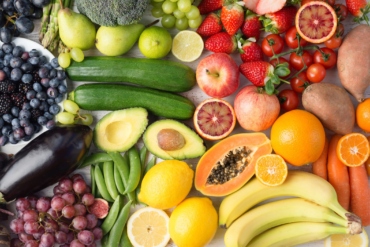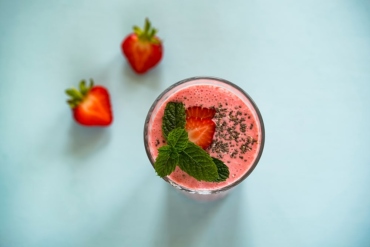The Sporting Life 10K and Goodlife marathon mark the opening for race season in Toronto. Proper nutrition leading up to and on race day will make all the difference in how the runner feels and in their results. As a 10km-marathoner and triathlete myself, this is an area of special interest to me and I have experienced first hand the difference proper nutrition can have on performance. Please keep in mind that all advice is based on running and training for a 10km race and should not be applied to other sports or distances. However, if you have an athletic event you are training for and would like information about nutrition please feel free to contact.
Carbohydrates
A question that comes up far too often: Are carbohydrates bad for you? The answer is definitively NO! As an adult runner, carbs should make up 60% of your daily diet. Carbohydrates are the main source of fuel used during a 10km run.
This does not mean you should eat a loaf of white bread though! Complex carbohydrates maintain more stable blood sugar so you don’t get the energy crash after eating but still supply your body with fuel and nutrients.
Here are some of the best choices for carbohydrates:
Whole grains (such as oats, brown rice, quinoa)
Fiber-rich fruits and vegetables (such as apples, sweet potatoes, cooked spinach)
Legumes (such as kidney beans, chick peas)
Q: When is the best time to eat carbs before a race?
Some research suggests tapering down carbohydrate intake on days 3-7 before the race and then increasing carbohydrates 1-2 days before competition. Whether you decide to taper or not, it is a good idea to increase from your normal carbohydrate intake 24-48 hours before your race.
Q: Do I need to take carbohydrate gels/ sports drinks during a 10km race?
Myth buster! You do not need gels or sports drinks during a 10km race, as your muscles have carb stores for almost 2 hours of activity. Also, popular sports drinks are often high in refined sugar and should be substituted for a higher quality electrolyte drink.
Proteins
Q: I thought carbs were the fuel for a 10km, why do we need protein?
Protein is required for all muscles to function and to be repaired. Exercise breaks muscle tissue down and repairing it with the help of protein is how performance is improved.
Q: How much protein do I need?
A 10km athlete should have about 1.2 grams per 1 kilogram of body weight (ex. For 65kg = 75-80 g/ protein per day). In general it is a good idea to have a 25-30g serving of protein with every meal. 1 serving of lean meat with 25-30g protein is about 4oz (100g) or the size of your iPhone or Blackberry.
Q: What protein sources can I pair with each meal?
Breakfast: 2 eggs OR smoothie with protein powder (whey, rice, soy etc.)
Lunch/Dinner: Skinless, boneless chicken breast/fish, extra lean ground beef OR tofu.
Q: Is dairy a good source of protein?
If you have no digestive concerns or allergies then dairy could be a good source of protein. But it is important which dairy you choose.
Good dairy choices: cottage cheese, low fat or Greek yogurt.
Bad dairy choice: cheese, as it is high in bad fats and salt.
Fats
Q: I thought fats were bad for you?
Actually quite the contrary, some fats can actually improve athletic performance.
Good fats = (Poly)Unsaturated: avocado, olive oil, coconut oil, almond butter.
Bad fats = Saturated/ Trans: butter/margarine, fried foods, cheese, meats high in saturated fat (beef {non lean}, pork)
Although fats can improve performance, they should still compose less than 30% of daily food intake.
Hydration
Each individual has different hydration needs based on gender, body type, body composition and fitness level. However, the easiest way to tell if you are well hydrated is as simple as checking out your urine:
Light straw colour = hydrated
Dark yellow colour = dehydrated
If you are on a B complex vitamin this is a little more difficult as your urine is likely a neon yellow colour. If this applies to you, get a urine analysis from your ND or health care provider and ask for the specific gravity of your urine. This will tell you how concentrated urine is and therefore how hydrated you are.
Q: OK, urine is light straw colour; do I need to increase water before the race?
Yes, 1-2 days before the 10km increase water intake 20-30%. Water is required to fill glycogen (fuel) stores for your muscles. Drink 500mL of water 20-45minutes before the 10km race starts to keep you hydrated throughout the race.
Q: How much water should I bring/ drink during the 10km?
Trick question! You do not need to bring water or drink water at the fluid stations during a 10km race. The water belts can be uncomfortable and heavy and drinking will only slow you down. Your body has adequate fluid for a 10km race.
Q: When should I start drinking water after the race?
Water consumption should begin immediately after the race and continue until rehydrated.
Recovery Meal
Chances are your 10km race is not going to be the last time you ever lace up, so a recovery meal is very important to refuel the body so you can get back to training.
Q: How soon after the race should I have my recovery meal?
Have your recovery meal ASAP after the race, ideally on-site. Some examples of recovery meals are:
Protein fruit smoothie
Protein powder in water plus a piece of fruit
A small meal with 20g of protein and a balance of carbs and fat
Reminders
Eat what you’ve been eating. Do not try new foods the day of the 10km.
Increase carbohydrate and water intake 24-48 hours before 10km.
Breakfast: 2-3hrs before the 10km.
500mL water 20-45min before 10km.
Have a recovery meal immediately following race.



